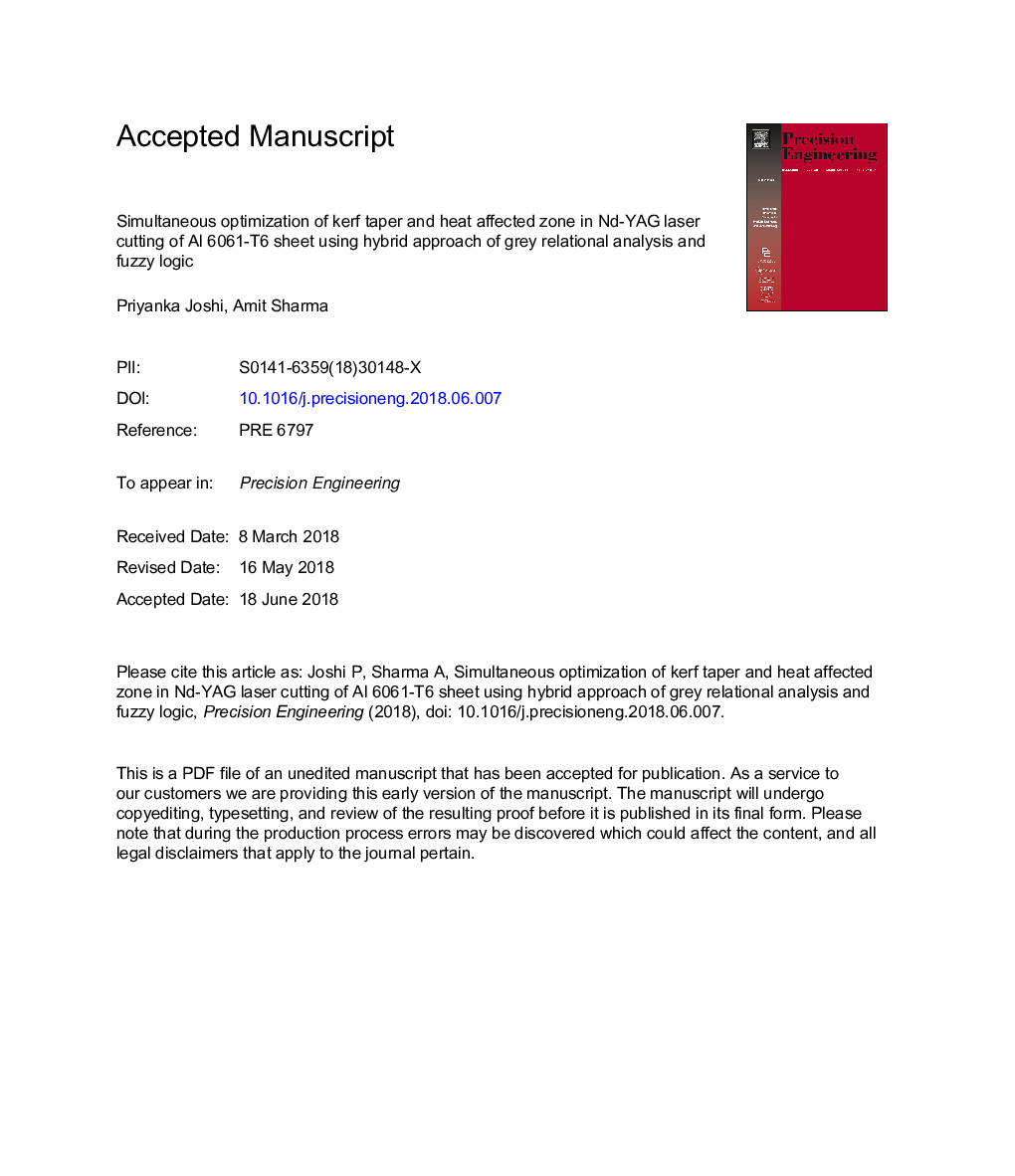| Article ID | Journal | Published Year | Pages | File Type |
|---|---|---|---|---|
| 10226518 | Precision Engineering | 2018 | 37 Pages |
Abstract
In this paper, laser cutting of Aluminum alloy (Al 6061-T6) thin sheet has been carried out using pulsed Nd-YAG laser to investigate the dimensional accuracy of the kerf geometry and zone of the metallurgical changes in the sheetmetal. These responses are quantified in terms of kerf taper and heat affected zone for the study. The taper in the kerf and heat affected zone are the functions of four laser cutting parameters namely: lamp current, pulse width, pulse frequency and cutting speed and different settings of these laser cutting parameters are utilized to analyze the responses. In order to analyze the experimental results, a systematic design of experiments namely Box Behnken design (BBD) has been employed to conduct the experiments. Further, the experimental results have been optimized using hybrid approach of grey relational analysis and fuzzy logic. The analysis of variance (ANOVA) has been carried out to determine the significance of laser cutting parameters for the process where pulse frequency is found as the most leading parameter in the study. The application of hybrid approach is capable to reduce the kerf taper and HAZ of laser cut kerf by 2.52% and 42.32%, respectively.
Keywords
Related Topics
Physical Sciences and Engineering
Engineering
Industrial and Manufacturing Engineering
Authors
Priyanka Joshi, Amit Sharma,
